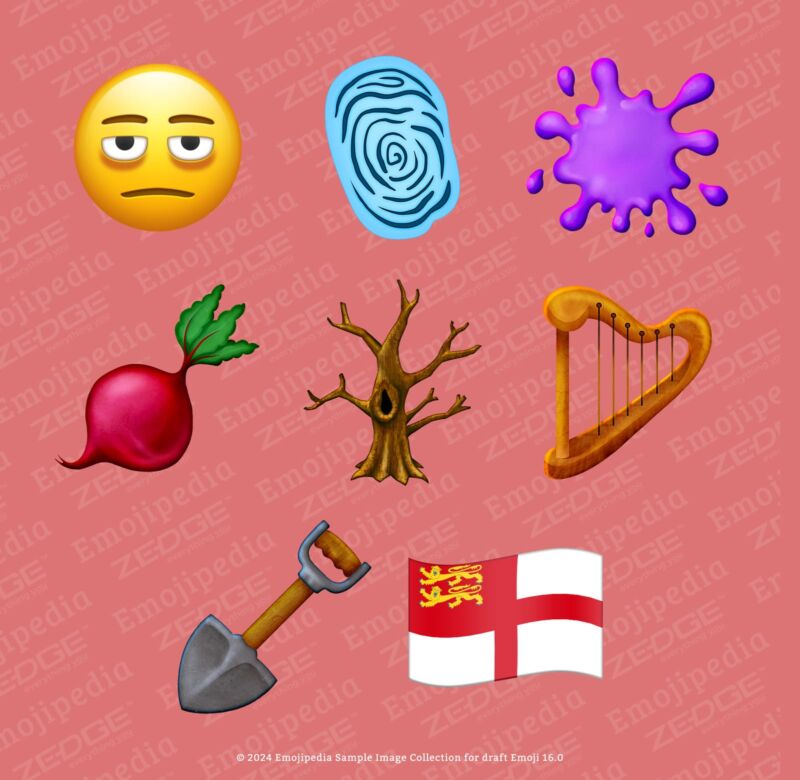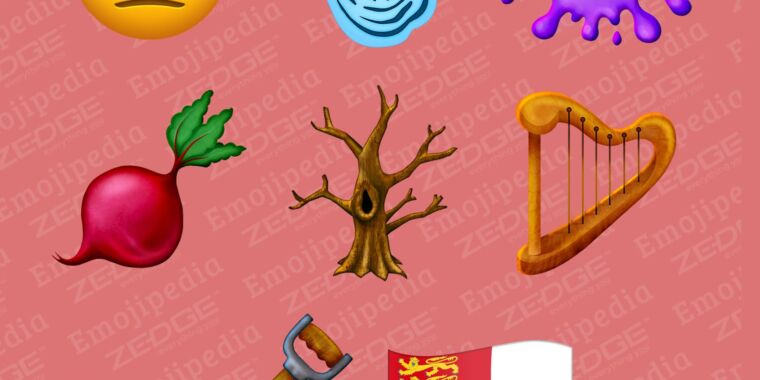
The Unicode Consortium has finalized and released version 16.0 of the Unicode Standard, the comprehensive character set that allows our phones, tablets, PCs, and other devices to all communicate and work together. The update adds 5,185 new characters to the standard, bringing the total to a whopping 154,998.
Of those 5,185 characters, the eight new emoji characters will get the most attention, including a shovel, a fingerprint, a leafless tree, a radish (formally classified as a “root vegetable”), a harp, a purple blotch reminiscent of the Nickelodeon logo from the ‘90s, and a flag for the island of Sark. The standout, of course, is “face with bags under eyes,” whose long, thousand-yard stare perfectly sums up the era in which it was born. As usual, Emojipedia has sample images to give you an idea of what these will look like when implemented by various operating systems, apps, and services.
Unicode 16.0 also adds support for seven new modern and historical scripts: the West African Garay alphabet; the Gurung Khema, Kirat Rai, Ol Onal, and Sunuwar scripts of Northeast India and Nepal; and the historical Todhri and Tulu-Tigalari scripts of Albania and Southwest India, respectively.
We last got new emoji in the 2023 Unicode 15.1 update, though all of these designs were technically modifications of existing emoji rather than new characters. Many emoji, particularly those for skin and hair color variants, use a base emoji plus a modifier emoji, combined with a “zero-width joiner” (ZWJ) character to make them appear as a single character instead. The lime emoji in Unicode 15.1 was actually a lemon emoji combined with the color green; the phoenix was a regular bird merged with the fire emoji. This was likely because 15.1 was only intended to be a minor update to the 2022 Unicode 15.0 standard.
Most Unicode 16.0 emoji, on the other hand, are their own unique characters. The one exception is the Sark flag emoji; flag sequences are created by placing two “regional indicator letters” directly next to each other and do not require a ZWJ character between them.
Inclusion in the Unicode standard is just the first step for new emoji and other characters on their journey from someone’s mind to your phone or computer. Software makers like Apple, Google, Microsoft, Samsung, and others will have to design iterations that fit their existing interpretations of emoji characters, they’ll have to release software updates that use the new characters, and people will have to download and install them.
We’ve seen a few people on social media share that the Unicode 16.0 release includes a “greenwashing” emoji designed by Shepard Fairey, an artist best known for Barack Obama’s 2008 “Hope” poster. This emoji, and the attempt to stir up controversy around it, is all an elaborate hoax: there’s a fake Unicode website announcing it, a fake lawsuit threat claiming to come from a real natural gas industry group, and a fake article by Cory Doctorow about the whole “controversy” published in a fake version of Wired. These were all published on websites with convincing-looking but fake domains, all registered within a few weeks of each other in August 2024. The face with bags under its eyes emoji feels like an appropriate response.

